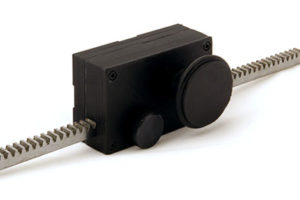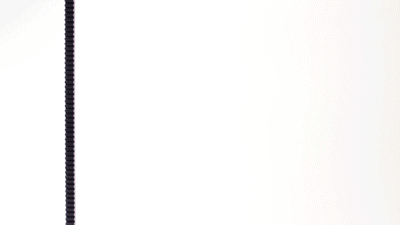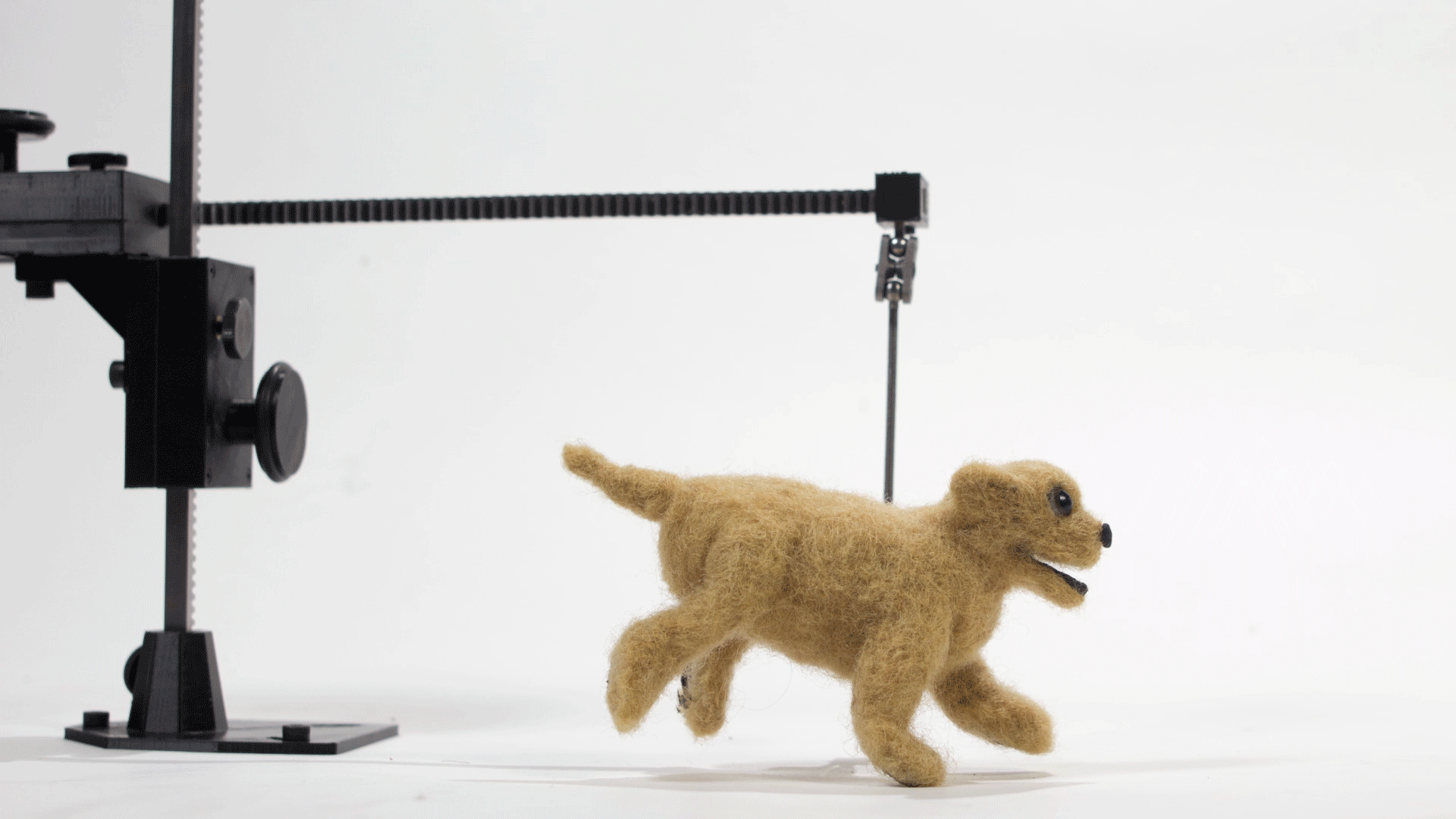Winders are compact rack-and-pinion mechanisms that allow stop motion animators to easily make linear moves in precisely controllable increments. The large knob on the side of the winder controls a gear (the “pinion”) inside the winder, which engages with the teeth of the gear bar (the “rack”) to move it through the winder. The smaller knob can be loosened or tightened to release the rack for positioning, or to lock it in place once the desired position is achieved.
Uses
The assembly can be utilized a couple of different ways, depending on the needs of the scene, either by moving the rack through a stationary winder, or the winder along a clamped down rack. They might be used to animate a hovering spaceship, facilitate the bounce in a character’s walk, allow for very subtle weight shifts on a stationary character, or any number of other linear moves. Two winders may also be attached orthogonally to allow the animator to break down more complex moves into two independent axes. This layout makes it incredibly quick and easy to animate jumps, bounces, or even the chaotic wanderings of a fluttering butterfly.
At this time, only small, lightweight winders are available — they’re very well suited to moving light objects and puppets, but should not be used for heavy tasks, like moving the camera (unless the weight of the camera is supported by a separate rig).
Materials
The goal of this site is to provide useful tools to stop motion animators without pricing out the low budget enthusiasts, so the parts are 3D printed wherever possible, with stronger, metal components used for high stress points that printed plastic couldn’t handle (such as the rack, threaded mount points, and the gear shafts). The plastic parts are printed from Ultimaker PLA filament, selected for its rigidity, reliability in printing, and environmentally friendly chemical composition.


